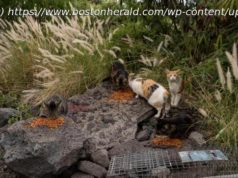Farmers in Southern California are nurturing coffee bushes in what may be the first serious effort to commercialize beans from the contiguous United States.
GOLETA, Calif. — There is a new crop growing in Southern California’s famous avocado groves — coffee.
About two dozen farms between San Diego and here, just outside Santa Barbara, are nurturing coffee bushes under the canopies of old avocado trees, in what may be the first serious effort in the United States to commercialize coffee grown outside Hawaii, home of Kona coffees.
“When people hear I’ m growing coffee, they typically make a face and say something like, ‘Well, how good can coffee grown in California be?’ ” said Jay Ruskey, the owner of Good Land Organics, who is widely regarded as the father of the state’s nascent coffee business.
The farmers are hoping to capitalize on a variety of changing factors abroad and here, including the aging of California’s avocado trees, which are producing less fruit.
The avocado growers face major disruptions in their business, including increased competition from Mexican imports, less access to water and rising real estate prices, all of which are forcing them to rethink that crop. But thanks to Mr. Ruskey, they have realized that their sprawling avocado trees provide perfect shade for high-quality coffee bushes.
One variety of Mr. Ruskey’s beans, Pacamara, emits an earthy scent like the smell of California dirt and new plants in spring. His Geisha beans have a light and fruity flavor with low acidity. Bourbone finishes with a chocolate taste.
As growers like him consider the move into growing coffee beans, they are eyeing machinery that can harvest the beans, which would reduce labor costs, as well as a contraption called a demucilager that mechanically strips coffee berry skin and pulp off the beans, rather than using water to clean them.
And they see more and more American consumers willing to spend $8 or $12 for a cup of joe, which would offset their high costs of production.
At the same time, climate change threatens to damage the coffee crop in the tropical highlands that produce nearly all the world’s beans, potentially opening up a lucrative opportunity in the $20 billion export market for beans. Last year, some small Brazilian coffee farmers lost 90 percent of their crop to drought and heat, and similar conditions in Sumatra in western Indonesia made it uneconomical for many farmers there to harvest what little crop they had.
Mr. Ruskey has grown coffee on his farm for more than a decade, but it is only over the last three or four years, as his coffee started winning high scores in taste tests, that other farmers have begun to try their hands at growing it. Still, Doug Welsh, roastmaster at Peet’s, notes that the number of coffee bushes growing in California today is 30 times what it was 13 years ago when Mr. Ruskey started, or about 14,000 plants.
“We probably roast more coffee at Peet’s in one day than is being produced on all the farms growing coffee here, but I’ m looking at this as a cup half full, ” Mr. Welsh said. “It’s early days, but I think it could at least get to be as big as the Hawaiian coffee business.”
(There are roughly 800 coffee farms in the Hawaiian Islands producing as much as nine million pounds of unroasted beans a year; California produces only hundreds of pounds. Globally, 12 billion pounds of coffee are consumed each year.)
These growers aim to appeal to the premium coffee market. More than half the adult coffee drinkers in America reported drinking a specialty coffee daily, according to the National Coffee Association, or roughly twice as many as in 2010.
“People are shifting away from the way my grandparents drank coffee, which was at breakfast and made from whatever coffee was on sale — it was simply fuel, ” said Peter Giuliano, chief research officer at the Specialty Coffee Association. “They’ re willing to pay for something unusual.”
A pound of dried green specialty coffee beans can sell for as much as $120 in today’s market, according to Andy Mullins, a retired technology executive who has planted coffee on his property east of Santa Barbara. “You should be able to produce a pound for under $30, which is a superb profit margin, ” Mr. Mullins said. “The only places that see better margins than that are software companies.”
Mr. Mullins is not a coffee drinker, but he caught the bug after visiting Mr. Ruskey’s farm, which cascades down a mountainside some 650 feet above the Pacific Ocean. Dragon fruit trees and finger lime bushes are interspersed among cherimoya and avocado trees, and each fruit crop is enlisted to help others grow. The avocado trees are the workhorses, acting as trellises for passion fruit vines and providing shade for the coffee bushes.
His profits from growing those unusual crops has helped persuade other farmers to take on the risk and expense of growing coffee. It can take as many as four years for coffee plants to get established, said Mark Gaskell, a farm adviser at the University of California, Davis, meaning a grower must make a significant upfront investment before seeing any return.
In addition, coffee is labor-intensive. Many of the coffee growers here are looking to Brazil, where coffee harvesting machines have replaced the people who picked and processed coffee, for ideas about how to reduce labor costs.
“The way they do it there would remind you of how cotton or almonds are harvested, highly mechanized and technical, ” Mr. Welsh said, though he noted that such machinery tends to operate on large, flat spaces that are very different from coastal California’s mountainous terrain.
Many California avocado groves are aging, confronting their owners with a variety of challenges — and coffee offers one sort of transition.
Avocado trees were popular because they are easy to grow, requiring water, a little fertilizer and almost no maintenance. But water is now a more expensive resource, and because avocado trees are traditionally not pruned, older trees have dense foliage that discourages fruiting.
That was the problem Mr. Mullins faced when he retired to a home in the Santa Barbara area. “The home we purchased came with four acres of avocado trees, and we thought, Hey, that could be an interesting thing to get involved with, ” he said.
But he soon discovered that his avocado trees were 30 years old and not so productive. His options were to cut them back severely to regenerate growth, replace them or prune them, each of which would require significant expense and put the grove out of production for at least two years.
So Mr. Mullins began looking into what’s known as high-density planting, and that led him to Mr. Ruskey, who is widely known among such growers. Good Land Organics looks more like a jungle than the cherimoya grove it was when Mr. Ruskey’s family bought the property 27 years ago.
He has planted cactuses that produce dragon fruit and avocado trees among the cherimoyas, and everything is knitted together with passion fruit vines. Their mingled roots help preserve soil, and their foliage creates a shade that helps conserve water while providing just the right amount of dappled sunshine for coffee bushes.
So after spending some time at Good Land, Mr. Mullins and his wife, Linda, planted coffee in their avocado grove.






